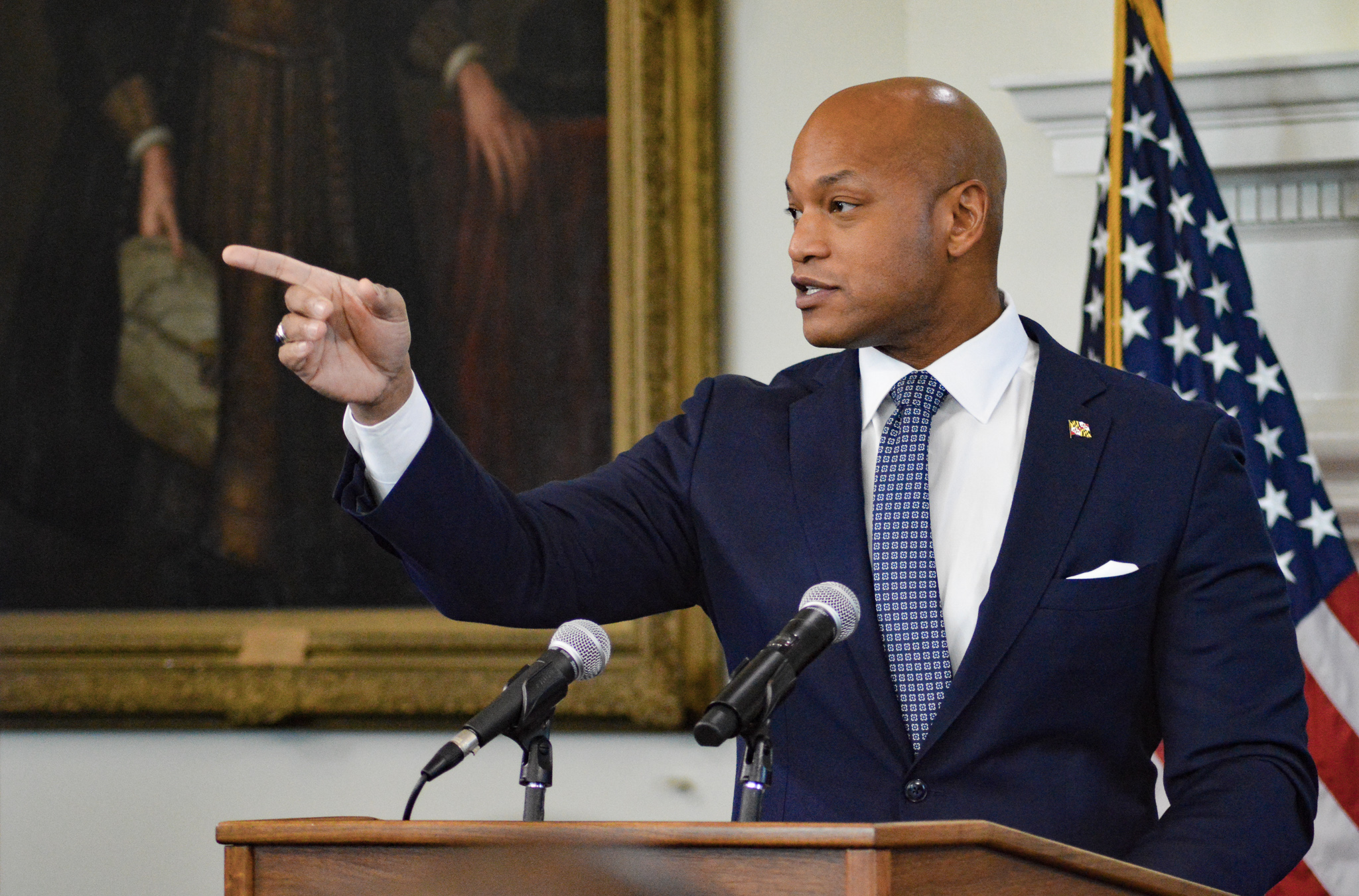ANNAPOLIS – Gov. Wes Moore proposed a budget Wednesday that would raise income taxes for Maryland’s highest earners and advance a broader plan he calls his “growth agenda” for the state.
Administration officials say that Moore’s budget plan is balanced and over time would reduce the state’s structural $3 billion deficit, in part by adjusting implementation of the ambitious education spending plan known as the Blueprint for Maryland’s Future.
“None of these things are easy. All of them are necessary,” Moore said in a news conference unveiling his plan.
As the state grapples with the growing fiscal challenge of a ballooning deficit, Moore’s budget is his attempt to make some tough choices and bring things back in line. The plan would impose tax hikes for the state’s top 18% of earners. It would also make difficult cuts to education and other programs, including some for people with developmental disabilities.
House Republican Leader Jason Buckel, who represents Allegany County, commended Moore for diagnosing the state’s financial woes, but he expressed concern about the proposed tax increases.
“It is encouraging to see that Governor Moore has made closing the deficit and growing Maryland’s economy a priority,” Buckel said in a Joint Republican Caucus statement sent to Capital News Service following the budget announcement. “However, parts of his budget plan may be giving with one hand while taking with the other. I am concerned that the tax increases in his budget may hinder our economic growth and not result in the revenues he anticipates.”
Senate Republican Leader Stephen Hershey Jr., who represents Caroline, Cecil, Kent and Queen Anne’s Counties, said he is specifically concerned about personal income tax hikes.
“The reduction in the corporate tax rate is something we’ve long advocated for,” Hershey said, “however the increase in the personal income tax will be a direct hit to Maryland’s small business community that file as pass-through entities on personal returns.”
Despite the increase in taxes for the wealthiest households, Moore’s proposal leaves taxes unchanged or reduced for 82% of taxpayers, according to administration officials. One official told reporters the average savings are estimated to be around $173 a year, while earners in lower- to middle-income brackets may see closer to $300.
According to Moore, the brunt of the tax increases will be shouldered by Marylanders with a household income north of $700,000 a year. In 2023, more than 18% of Maryland households were estimated to earn $200,000 or more a year, according to data from the U.S. Census Bureau.
In another attempt to balance the tax model, Moore also proposed the elimination of the inheritance tax. The plan would eliminate the inheritance tax “in a way that is revenue-neutral, by also changing the exemption on our estate tax,” said Helene Grady, secretary of the Department of Budget and Management.
To attract businesses to the state, Moore presented a plan to lower the corporate tax rate over a two-year period starting in fiscal year 2028.
“Economic growth is our North Star,” Moore said.
Moore’s proposal is just the beginning of a long conversation that lawmakers in the Maryland General Assembly will now begin. Democratic leaders will consider Moore’s choices, along with their own priorities, which may include protecting their sweeping education goals.
“The House will have a high bar for any cuts to the Blueprint,” House Speaker Adrienne Jones, a Democrat representing Baltimore County, said at an event hosted by The Baltimore Banner earlier this week.
Senate President Bill Ferguson, a Democrat representing Baltimore City, echoed the sentiment, saying, “We’re not going to back down on our commitment to public education in the state of Maryland.” But he also said they will review the effectiveness of every state program.
Moore aides say he wants to adjust implementation of the Blueprint in ways that would save $2.5 billion over five years.
“The governor will propose legislation to temporarily suspend the Blueprint’s requirement that teachers spend no more than 60% of their time teaching,” a senior administration official said, “and the funding increases are tied to this requirement.”
Moore aides say this would ultimately increase the Blueprint’s effectiveness and improve schools.
The budget proposal also features a series of “cost containment measures” at the state’s Developmental Disabilities Administration, according to another official.
“This is among one of the hardest proposals that we are bringing to the General Assembly, given the vulnerability of this population,” that official said. The cuts are meant to “sustain the progress we’ve made since fiscal ‘23, without continuing to grow unsustainably going forward.”
In a live-streamed news conference with reporters, Moore said it will be important to make “difficult cuts when necessary.”
“We need to rein in spending,” he said. “We need to tighten our belts. We need to spend wisely. We need to spend for the future.”

